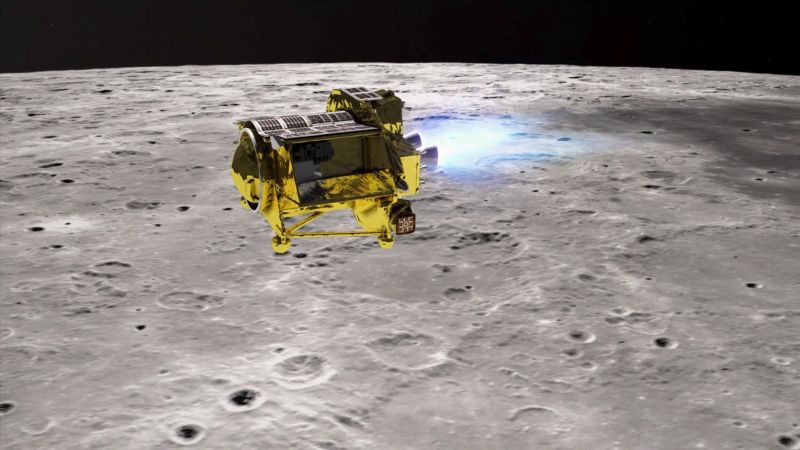
Unveiling the Mysteries of the Lunar Anthropocene and Beyond

Explore the latest scientific discoveries and explorations, from the Moon's 'Lunar Anthropocene' to the rare Malayan tiger and ancient fossil nests. Join us on a journey of wonder and fascination as we delve into the realms of space, wildlife, and natural history.
Journey to the Lunar Anthropocene
The moon, a celestial body that has captivated human imagination for centuries, holds within its craters the indelible marks of human exploration. Over the past six decades, humankind's forays into space have fundamentally shaped the lunar landscape, giving rise to what some scientists propose as a new geological epoch: the 'Lunar Anthropocene.'
An artist's illustration depicts the SLIM lander's descent toward the lunar surface.
This proposed epoch traces its origins to the historic landing of the former Soviet Union's uncrewed spacecraft, Luna 2, in September 1959. The impact of this event, which left a distinct crater on the lunar surface, marked the beginning of a new era in the moon's history. Subsequently, numerous missions, ranging from crash-landings to successful soft landings, have left an enduring imprint on the lunar terrain.
From rovers to scientific experiments, each spacecraft has contributed to the transformation of the moon, with remnants of human exploration scattered across its desolate expanse. As more space agencies and countries set their sights on lunar expeditions, the legacy of the Lunar Anthropocene continues to unfold, shaping our understanding of the moon's evolution and our role in its history.
Moon Sniper: A Robotic Odyssey
Amid the vast lunar expanse, Japan's 'Moon Sniper' mission embarked on a daring robotic odyssey to unravel the mysteries of the moon's origins. The mission, led by the Japan Aerospace Exploration Agency, achieved a precise landing with the uncrewed Smart Lander for Investigating Moon (SLIM). However, the mission encountered an unforeseen setback when its solar cell failed to generate electricity, plunging the spacecraft into a critical power predicament.
Despite the initial setback, hope remains for the Moon Sniper and its accompanying rovers, poised to delve into the moon's enigmatic past. If the spacecraft can harness sunlight to recharge its batteries, the mission may yet endure, offering unprecedented insights into the lunar landscape and its historical significance.
Tracing Ancient Footsteps and Natural Wonders
Venturing into the annals of natural history, researchers have uncovered remarkable insights into the ancient world, from the migration patterns of woolly mammoths to the mesmerizing presence of the Malayan tiger. By studying mammoth tusks, scientists have retraced the extensive journeys of these majestic creatures, shedding light on their interactions with human populations and the landscapes they once roamed.
In the depths of Malaysia's ancient rainforests, the elusive Malayan tiger has become a symbol of conservation urgency, with only 150 of these magnificent felines estimated to remain. Photographer Emmanuel Rondeau's arduous expedition to capture an image of the Malayan tiger exemplifies the dedication required to protect these endangered species and preserve their natural habitats.
It took five months for photographer Emmanuel Rondeau to capture the perfect shot of a Malayan tiger.
Meanwhile, a fossilized nest, dating back approximately 29 million years, has offered a rare glimpse into the world of ancient insects. Preserved in stunning detail, the grasshopper nursery provides a unique window into the past, illuminating the intricacies of prehistoric life and the forces that shaped the natural world.








